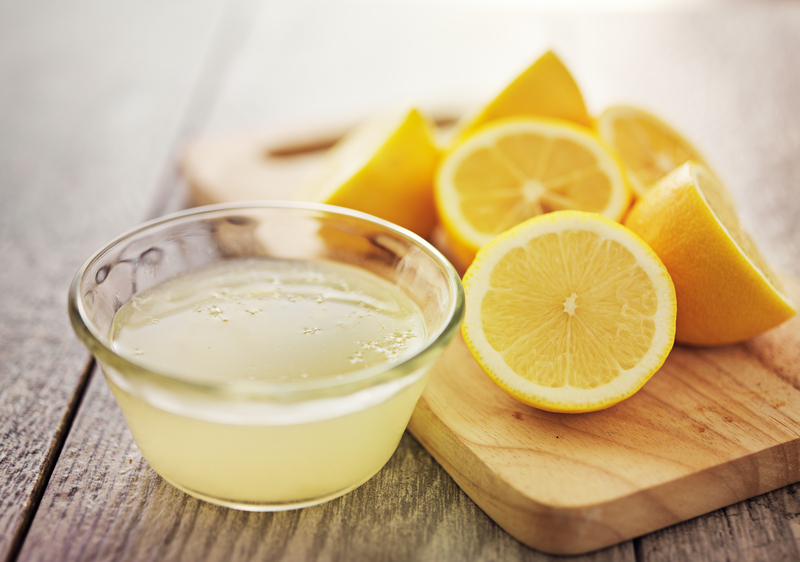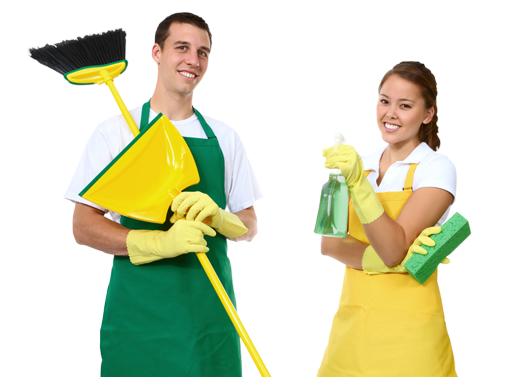Protect Your Velvet Curtains' Beauty with These Safe Washing Tips
Posted on 18/09/2025
Protect Your Velvet Curtains' Beauty with These Safe Washing Tips
Have you fallen in love with the exquisite, soft allure of velvet curtains gracing your windows? Velvet exudes sophistication, luxury, and warmth, transforming any space into an inviting retreat. However, to keep your velvet curtains looking their best, you must care for them properly--especially when it comes to washing and maintenance. In this comprehensive guide, you'll discover the most effective, safe, and gentle ways to wash velvet curtains without risking their elegant texture and vibrant color.

Why Velvet Curtains Require Special Care
Velvet is not just a fabric--it's an experience. Its richness comes from delicate fibers that form a plush pile, easily damaged by rough handling or improper cleaning. Neglecting the right methods can cause flattening, crushing, water marks, or even shrinkage of your cherished drapes. Thus, adopting safe velvet curtain washing tips is crucial for home decorators and interior aficionados alike.
Understanding the Fabric: Types of Velvet Used in Curtains
Before you start cleaning, it's paramount to identify the type of velvet your curtains are made from. Common varieties include:
- Silk Velvet: Rare, ultra-luxurious, and delicate. These require the gentlest handling, preferably by professionals.
- Cotton Velvet: More durable yet still sensitive to water and heat. Can sometimes be spot-cleaned at home.
- Synthetic Velvet: Made from polyester or nylon blends, these are sturdier, often more colorfast, and less prone to shrinkage.
Each type of velvet requires slightly different techniques and precautions. Check the manufacturer's label before selecting a cleaning method.
Essential Pre-Washing Steps for Preserving Velvet Curtain Beauty
To effectively protect your velvet curtains' beauty, always begin with the following preparatory measures:
- Read the Care Label: Determine whether your velvet curtains are labeled machine washable, dry clean only, or hand wash.
- Vacuum First: Use a vacuum with a soft brush attachment to gently remove dust, dirt, and loose debris. This prevents particles from embedding deeper during washing.
- Spot Test: Before washing the entire curtain, test a small, inconspicuous area with water or your chosen cleaner to check for color bleeding or fabric damage.
- Remove Hardware: Take off all hooks, rings, and hardware to prevent tearing.
By respecting these steps, you vastly decrease the chances of permanent marks, wrinkles, or texture changes on your velvet drapery.
Safe Washing Tips for Velvet Curtains
When to Opt for Professional Dry Cleaning
Dry cleaning is the safest option for almost all velvet curtains--especially those made from silk or high-end cotton. Professional cleaners have the expertise and equipment to handle the delicacy of velvet, ensuring that the pile remains plush and the color vibrant.
- If in doubt, dry clean. It's best to err on the side of caution if you're ever unsure about your curtain's material.
- Dry clean if the label says so. Using at-home methods on dry-clean-only velvet may lead to irreversible damage.
Hand Washing: A Gentle Method for Cleaning Velvet Drapes
If your velvet curtains are labeled as washable, hand washing is the preferred approach. Here's how to do it safely:
- Fill a Tub with Cold Water: Use a bathtub or a large basin and fill it with cold or lukewarm water (never hot).
- Add Mild Detergent: Choose a gentle, non-alkaline, or specialized detergent designed for delicates. Avoid bleach or fabric softeners.
- Submerge & Swish: Gently immerse your curtains and swish them softly to loosen dirt. Don't rub, twist, or wring.
- Rinse Thoroughly: Drain the soapy water and refill the tub with fresh water, swishing until the detergent is removed.
- Support When Lifting: Velvet is heavy when wet. Gather the curtain and support its weight to prevent stretching or ripping.
*Remember:* Never wring out velvet fabric. Instead, press the water out gently or lay on a clean towel and roll up to absorb the excess water.
Machine Washing: Proceed With Extreme Caution
Some modern synthetic velvets are labeled machine washable. If that's the case:
- Use the Delicate Cycle: Always select the gentlest cycle with cold water.
- Choose a Mesh Bag: Place curtains inside a large mesh bag to avoid snagging.
- Wash Separately: Do not wash velvet with other fabrics or items.
- Low Spin: Set to the lowest spin speed to prevent crushing the nap.
If your velvet curtains are not specifically labeled for machine washing, hand wash or dry clean instead.
How to Dry Velvet Curtains Without Damaging Their Pile
Proper drying is as important as gentle washing for preserving velvet curtain beauty.
- Skip the Dryer: NEVER tumble dry velvet; the heat and tumbling action will crush and distort the pile beyond repair.
- Air Dry Flat: Lay the wet curtain flat on a clean, dry towel, preferably on a flat surface large enough to spread it out in its natural shape. Reshape as needed.
- Hang to Dry: Alternatively, hang the curtain over a wide, padded hanger or rod, ensuring folds don't set in. Avoid hanging in direct sunlight, which can fade colors.
*Tip:* Flip the curtain occasionally to allow all areas to dry evenly and prevent moisture from lingering in thick folds.
How to Remove Wrinkles and Refresh Velvet Curtain Texture
Steaming: The Safest Way to Smooth Velvet
Steam can refresh and revive the lush nap of velvet curtains. Follow these steps:
- Use a Handheld Garment Steamer: Hold the steamer a few inches away from the fabric and lightly steam. Don't let the nozzle touch the fabric.
- Smooth by Hand: After steaming, lightly brush the pile with your fingers to help restore the upward nap.
Do not iron velvet directly! Ironing will flatten and potentially burn the pile. If absolutely necessary, iron on the reverse side using a velvet board and lowest heat setting, but steaming is always preferable.
Smart Tips for Preventing Velvet Curtain Damage
- Avoid Over-Washing: Frequent washing is unnecessary--regular dusting, vacuuming, and spot-cleaning suffice most of the time.
- Protect from Sunlight: Direct sun fades velvet; use sheer curtains or blinds to minimize exposure.
- Keep Away from Pets: Cats and dogs may snag the velvet pile; consider training or protecting the area if needed.
- Store Properly: If storing, fold loosely and place in a breathable cotton bag, away from dampness and heat.
These preventive measures will help extend the life and vibrancy of your luxurious velvet curtains.
The Best Products for Safe Velvet Curtain Washing
- Mild Detergents: Look for detergents specifically formulated for delicate fabrics and woolens. Brands like Woolite or Ecover Delicate are gentle and effective.
- Soft Brushes: Use a natural-bristle clothes brush for gentle pre-wash dusting or post-drying nap restoration.
- Garment Steamers: Choose a quality handheld steamer for regular wrinkle prevention and fabric refreshing.
Avoid using harsh chemicals, bleach, or strong stain removers on velvet--these can permanently discolor or damage the plush fibers.
Common Velvet Curtain Cleaning Mistakes to Avoid
- Wringing Out Water: This can crush the pile and misshape your curtains's elegant drape.
- Tumble Drying: Heat and tumbling will destroy the unique texture of velvet.
- Using Hot Water: Can lead to shrinkage and color fading.
- Ignoring Stains: Address spills immediately--once they set, velvet is much harder to clean.
- Ironing Directly: Never expose velvet pile to iron heat. Always use steam instead.
Spot Cleaning Velvet Curtains: Quick Rescue for Stains
For accidental spills or surface stains, spot cleaning is your best friend for protecting velvet's beauty:
- Blot Gently: Act fast--use a soft, clean cloth to blot up (not rub) the spill.
- Use Mild Soap: Dilute a tiny bit of gentle detergent with water. Dab the stain's edge inward with a soft cloth.
- Rinse & Absorb: With a lightly damp cloth, remove any soapy residue. Lay a dry towel over the spot to wick out moisture.
- Avoid Overwetting: Too much water can leave marks. Always blot and let air dry thoroughly.
*If unsure, consult a professional or try cleaning an inconspicuous spot first.*
Frequently Asked Questions About Washing Velvet Curtains
Can All Velvet Curtains Be Washed?
Not all velvet curtains are washable. Silk velvet and some high-end cotton velvets should only be dry cleaned. Check the care label and when uncertain, opt for professional cleaning to safeguard the fabric.
How Often Should I Clean Velvet Curtains?
Routine vacuuming or gentle dusting every few weeks will keep velvet fresh. Full washing is only necessary once or twice a year, unless there's a spill or heavy soiling.
How Do I Keep Velvet Curtains From Flattening?
To restore pile between cleanings, lightly steam, then brush the nap upward with a soft brush or your hand. Avoid pressing heavy objects against the curtains.
Is It Safe to Steam Velvet Curtains?
Yes, steaming is safe and recommended! Steam from a distance to smooth wrinkles and revive the plush texture--with zero risk of burning or flattening.

Conclusion: Enjoy Beautiful, Long-Lasting Velvet Curtains
Proper care is the key to preserving the timeless beauty of your velvet curtains. By following these safe, gentle washing and drying practices, you'll keep your drapes looking sumptuous, lustrous, and stunning for years to come. Remember: Always read the care label, handle with care, and when in doubt, consult a professional. Luxuriate in your velvet curtains' rich charm, confident that you've done everything to protect their elegance and extend their lifespan.
Share Your Experience
Have you got a favorite velvet curtain care tip or a story about rescuing your drapes? Share it in the comments--your advice could help others maintain the brilliance of their own velvet window treatments!





